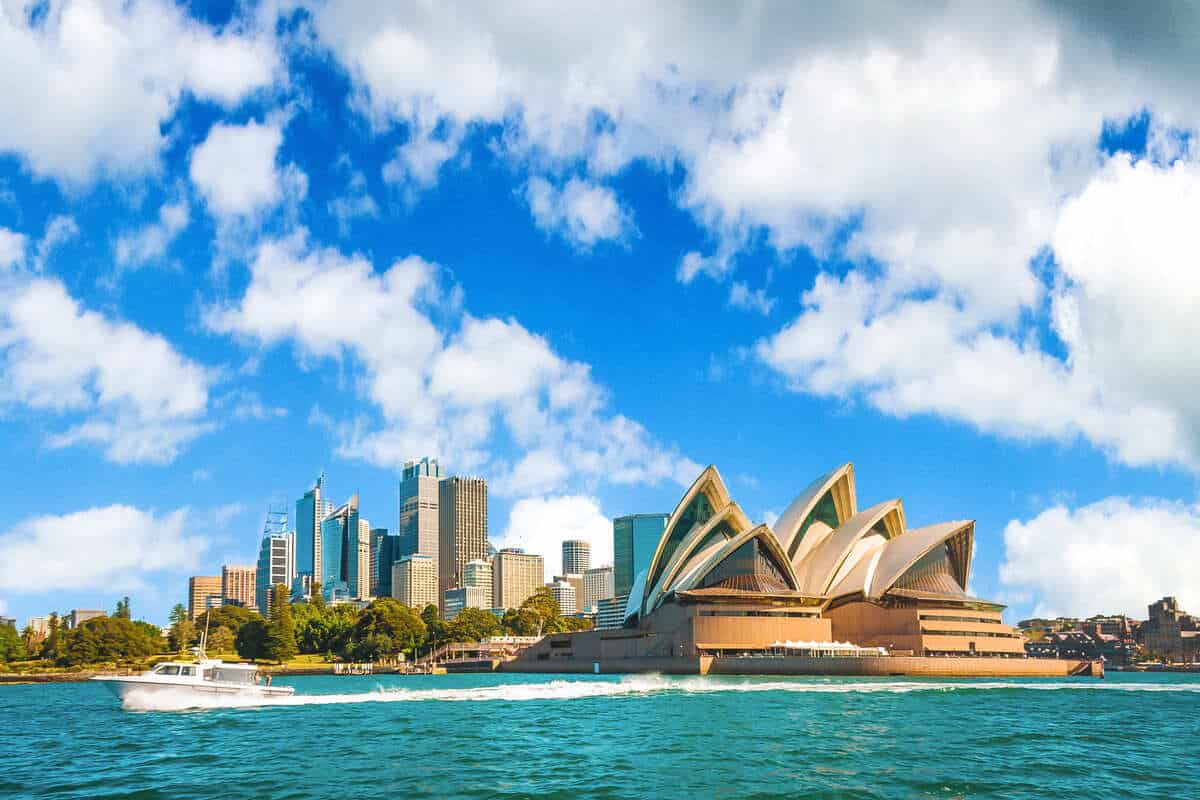The American passport is one of the most powerful in the world, granting its bearer facilitated access to more than 180 countries as of 2023, but it is not bulletproof.
While it’s true U.S. citizens can freely board flights to nearly every single major destination globally with no other requirement other than carrying a valid travel document, there are some major exceptions to that rule that not only expect them to apply for a permit in advance but also pay a fee in order to visit.
These are not some lesser-known, post-Soviet, openly anti-American countries, either.
They are five hugely popular tourist destinations attracting millions of visitors every year, but for some reason, Americans are ‘charged’ a small fee when visiting:

Australia
Other than offering golden-sand beaches, incredible nature, and some of the most exotic wildlife on the planet, Australia has one of the strictest immigration policies in the Western.
Effectively, no foreign nationals other than New Zealanders are granted free entry into Australia, and this includes Americans:
In order to be able to board an Australia-bound flight, U.S. citizens must provide proof they have applied for and obtained an entry clearance called Electronic Travel Authority (ETA) in advance.
The document is issued online upon completion of a form and payment of an AUS$20 fee, or the equivalent of approximately USD$13.41.

Despite not being officially called an entry fee, the ETA acts as such by barring entry to foreigners who have not submitted an application and thus paid for the right to travel to Australia beforehand.
The ETA enables Americans to enter Australia as many times as they want during a one-year period, as long as each visit does not exceed 3 months at a time.
New Zealand
Similarly to their Australian neighbors, the Pacific country of New Zealand expects U.S. passport holders, and indeed all tourists who are not Australians, to either apply for a paid entry visa or an NZeTA, their own version of the Australian ETA.

The NZeTA costs NZD$23, or roughly USD$14.43 to apply, and it is valid for multiple entries not exceeding 3 months during a 2-year period.
Once the two years elapse, a new application is required. On top of that, authorities require proof of payment of the International Visitor Conservation and Tourism Levy (IVL), stipulated at NZD$35.
In total, it costs USD$36.37 simply to be granted permission to travel to New Zealand.
India
A country big enough to be deemed by some a subcontinent, India has enough natural and man-made wonders to keep you busy for months, and you’ll surely want to use up the one-year tourist e-Visa authorities normally issue Americans.

It is not free, though: currently, the one-year entry permit costs USD$40 to apply, as stated by the Indian Embassy in Washington.
On top of that, e-Visa applicants must apply via designated entry points. Luckily, this includes all of India’s main international arrival points.
Vietnam
Home to the trendiest Asian destination this year, according to Kayak, Vietnam is yet another Asian country that is yet to fully lift visa curbs for Western arrivals.
Similarly to India, the border operates under an e-Visa system, and Americans are eligible to apply for a 30-day entry permit upon paying a USD$25 fee.

Upon applying, they must indicate which airport of arrival they will be flashing the e-Visa’s QR code at and which departure point, as well as the exact dates of entry and exit, so it is paramount that you have at least a loosely-outlined itinerary.
When visiting Phu Quoc, a beautiful paradisaical island off the coast of Southern Vietnam, however, Americans can benefit from a 30-day visa-free regime as long as they enter and leave Vietnam from this location.
All other destinations within Vietnam, such as Saigon (Ho Chi Minh City), Hanoi, Hoi An, or Nha Trang, will require applying for the e-Visa in advance.
Turkiye
Turkiye, formerly called Turkey, is one of only a handful of European (and Western Asian) countries where Americans cannot breeze through the border without first getting their wallets out.
In fact, U.S. citizens are not allowed to travel to Turkiye without first applying for an eVisa at all.

Although pretty straightforward to obtain, with applications being entirely processed online and not taking longer than a few minutes, the single-entry e-Visa still costs USD$50, a rather hefty entry fee compared to other countries listed here.
Unless the multi-entry option has been selected, an e-Visa can only be used once, which means every time a U.S. tourist seeks entry into Turkiye, they must pay the fee again prior to boarding their flight.
This policy also applies to Canadian tourists, but not Europeans, the British, or Latin Americans, who enjoy visa-free entry into Turkiye.

Regardless of visa restrictions imposed on Americans, Turkiye is set to become one of the busiest summer destinations this year, expecting a record number of visitors from across the pond.
Upon paying the fee, Americans can remain in the country for up to 3 months during any 180-day period.

